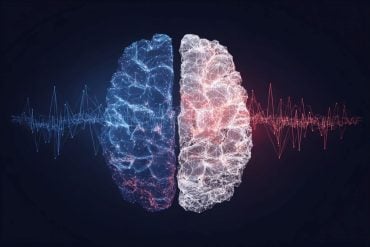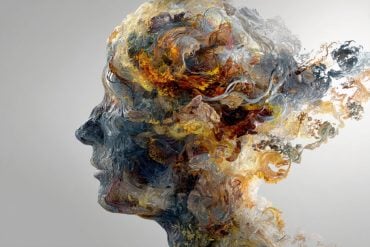Summary: Researchers found a distinct correlation between pupillary response and depression severity.
Researchers observed that in healthy individuals, pupils dilated in anticipation of a reward during a task, while this response was notably subdued in those with depression, especially in patients experiencing listlessness. This reduced pupillary reaction, indicative of decreased activation in the locus coeruleus, sheds light on the physiological aspects of depression.
The study suggests that pupillometry could serve as a valuable tool in diagnosing depression and tailoring individualized treatment, particularly in identifying suitable antidepressants that target the noradrenergic system.
Key Facts:
- Depressed patients show a reduced pupillary response to rewards, linking to lower activation in the locus coeruleus, a key brain structure.
- Pupillometry’s reliable findings in depression can aid in developing personalized treatment strategies, including the selection and dosing of antidepressants.
- The study reinforces the importance of understanding depression’s physiological mechanisms for improving treatment outcomes, especially for the 30% of patients unresponsive to current medications.
Source: Max Planck Insitute
Scientists from the Max Planck Institute of Psychiatry measured the pupillary reaction of participants while they were solving a task. In healthy participants, the pupils dilated during the task in anticipation of a reward, but this reaction was less pronounced in participants with depression.
“The reduced pupil reaction was particularly noticeable in patients who could no longer feel pleasure and reported a loss of energy,” says Andy Brendler, first author of the study. This feeling of listlessness is one of the most common symptoms of depression.
“This finding helps us to understand the physiological mechanisms behind listlessness better,” explains research group leader Victor Spoormaker.

Among other things, the pupillary reaction is a marker for activity in the locus coeruleus, the brain structure with the highest concentration of noradrenergic neurons in the central nervous system.
Noradrenergic neurons react to the neurotransmitter norepinephrine, an essential component in the stress response and the upregulation of arousal, in other words, the activation of the nervous system.
“The reduced pupillary response in patients with more listlessness indicates that the lack of activation of the locus coeruleus is an important physiological process that underlies the feeling of listlessness,” says Spoormaker.
The study also found the pupil response to be weaker the more depressive symptoms participants had. This replicates the findings of a previous study by the same research group. The replicability of neuropsychiatric methods is more the exception than the rule and demonstrates the reliability of pupillometry as a method.
Pupillometry could be used as a supplementary method for diagnosis. It could also contribute to the development of individualized treatment strategies for depression. For example, if a patient shows a significantly reduced pupil response, antidepressants that act on the noradrenergic system could be more effective than other medications. The medication dosage could also be optimized based on the pupil’s reaction.
Considering that an estimated 30% of depressive patients do not improve using the currently available medications, understanding the physiological mechanisms behind depression and fine-tuning diagnosis and treatment accordingly is urgently required.
About this depression research news
Author: Victor Spoormaker
Source: Max Planck Institute
Contact: Victor Spoormaker – Max Planck Institute
Image: The image is credited to Neuroscience News
Original Research: Open access.
“Assessing hypo-arousal during reward anticipation with pupillometry in patients with major depressive disorder: replication and correlations with anhedonia” by Victor Spoormaker et al. Scientific Reports
Abstract
Assessing hypo-arousal during reward anticipation with pupillometry in patients with major depressive disorder: replication and correlations with anhedonia
Major depressive disorder (MDD) is a devastating and heterogenous disorder for which there are no approved biomarkers in clinical practice. We recently identified anticipatory hypo-arousal indexed by pupil responses as a candidate mechanism subserving depression symptomatology.
Here, we conducted a replication and extension study of these findings. We analyzed a replication sample of 40 unmedicated patients with a diagnosis of depression and 30 healthy control participants, who performed a reward anticipation task while pupil responses were measured.
Using a Bayesian modelling approach taking measurement uncertainty into account, we could show that the negative correlation between pupil dilation and symptom load during reward anticipation is replicable within MDD patients, albeit with a lower effect size.
Furthermore, with the combined sample of 136 participants (81 unmedicated depressed and 55 healthy control participants), we further showed that reduced pupil dilation in anticipation of reward is inversely associated with anhedonia items of the Beck Depression Inventory in particular.
Moreover, using simultaneous fMRI, particularly the right anterior insula as part of the salience network was negatively correlated with depressive symptom load in general and anhedonia items specifically.
The present study supports the utility of pupillometry in assessing noradrenergically mediated hypo-arousal during reward anticipation in MDD, a physiological process that appears to subserve anhedonia.






